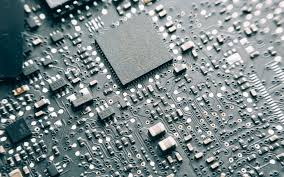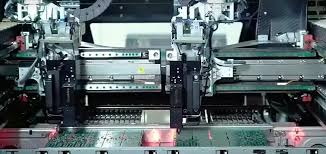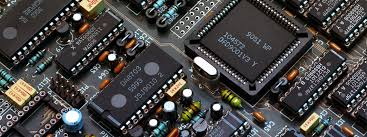Content Menu
● Introduction
● Understanding Surface Mount Technology
● The SMT Process
● Advantages of SMT Machines
● Innovations Enhancing Efficiency
● The Impact of SMT on Manufacturing Efficiency
● Conclusion
● FAQ
>> 1. What is Surface Mount Technology (SMT)?
>> 2. How does SMT improve production speed?
>> 3. What are the main advantages of using SMT over traditional methods?
>> 4. Are there any challenges associated with SMT?
>> 5. How can manufacturers further enhance SMT efficiency?
Introduction
Surface Mount Technology (SMT) has revolutionized the electronics manufacturing industry by providing a more efficient and effective way to assemble printed circuit boards (PCBs). This article explores how SMT machines enhance manufacturing efficiency through various processes, advantages, and innovations that streamline production.

Understanding Surface Mount Technology
Surface Mount Technology is a method of mounting electronic components directly onto the surface of PCBs. Unlike traditional through-hole technology, where components are inserted into holes drilled into the board, SMT allows for a more compact design and higher component density. This difference is crucial in modern electronics, where miniaturization and efficiency are paramount.
The SMT Process
The SMT assembly process consists of several key steps:
1. Material Preparation: This involves selecting and preparing the surface mount components (SMCs) and ensuring that the PCBs are free from defects.
2. Stencil Preparation: A stencil is created to apply solder paste accurately to the PCB pads where components will be placed.
3. Solder Paste Printing: Solder paste, a mixture of flux and tiny solder particles, is applied to the PCB using the stencil.
4. Component Placement: Automated pick-and-place machines precisely position SMCs onto the solder paste-covered pads.
5. Reflow Soldering: The assembled boards enter a reflow oven where the solder paste melts, bonding the components to the PCB.
6. Inspection: After cooling, boards undergo inspection to ensure quality and functionality.
Advantages of SMT Machines
SMT machines offer numerous advantages that significantly improve manufacturing efficiency:
- Higher Production Speed: SMT allows for faster assembly compared to traditional methods. High-speed placement machines can place thousands of components per hour, drastically reducing production time.
- Reduced Labor Costs: Automation in SMT processes minimizes the need for manual labor, leading to lower labor costs and reduced human error.
- Compact Designs: SMT components are smaller than their through-hole counterparts, allowing for higher component density on PCBs. This compactness enables manufacturers to create smaller devices with enhanced functionality.
- Improved Reliability: The solder joints formed during reflow soldering are generally more reliable than those created through traditional methods, as they have better resistance to mechanical and thermal stress.
- Flexibility in Design: SMT supports various component types and allows for intricate PCB designs that can accommodate complex circuits within limited space.

Innovations Enhancing Efficiency
To further improve efficiency in SMT manufacturing, several innovations have been introduced:
- High-Speed Placement Machines: These advanced machines utilize technologies such as laser alignment and multi-head systems to increase placement accuracy and speed.
- Inline Inspection Systems: Automated inspection systems check for defects in real-time, reducing rework rates and ensuring higher quality outputs.
- Automated Material Handling: Automating the supply chain within the manufacturing process reduces downtime associated with manual handling and increases overall productivity.
- Operator Training Programs: Well-trained operators can optimize machine settings and troubleshoot issues effectively, contributing to smoother operations and less downtime.
The Impact of SMT on Manufacturing Efficiency
The implementation of SMT has led to significant improvements in manufacturing efficiency across various sectors:
- Consumer Electronics: Devices like smartphones and tablets benefit from SMT's ability to create smaller, lighter products without sacrificing performance or reliability.
- Automotive Industry: The automotive sector utilizes SMT for advanced electronic systems that require high reliability under varying conditions.
- Medical Devices: In medical technology, where precision is critical, SMT ensures that devices meet stringent standards while maintaining compact designs.
Conclusion
Surface Mount Technology machines have transformed electronic manufacturing by enhancing efficiency through automation, compact designs, and improved reliability. As technology continues to advance, manufacturers who adopt SMT will likely see further improvements in production speed and cost-effectiveness. The benefits of adopting SMT not only streamline processes but also enable innovative designs that meet modern consumer demands.

FAQ
1. What is Surface Mount Technology (SMT)?
Surface Mount Technology (SMT) is a method used in electronics manufacturing where components are mounted directly onto the surface of PCBs instead of being inserted through holes. This allows for more compact designs and higher component density.
2. How does SMT improve production speed?
SMT improves production speed by utilizing automated pick-and-place machines that can place thousands of components per hour, significantly faster than manual assembly methods or traditional through-hole techniques.
3. What are the main advantages of using SMT over traditional methods?
The main advantages include smaller component sizes, higher density on PCBs, reduced labor costs due to automation, improved reliability of solder joints, and greater design flexibility for complex circuits.
4. Are there any challenges associated with SMT?
While SMT offers many benefits, challenges include potential issues with component reliability under mechanical stress and difficulties during prototyping due to high component density on boards.
5. How can manufacturers further enhance SMT efficiency?
Manufacturers can enhance efficiency by investing in high-speed placement machines, implementing inline inspection systems for quality control, automating material handling processes, and providing comprehensive training for operators.




















